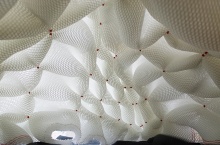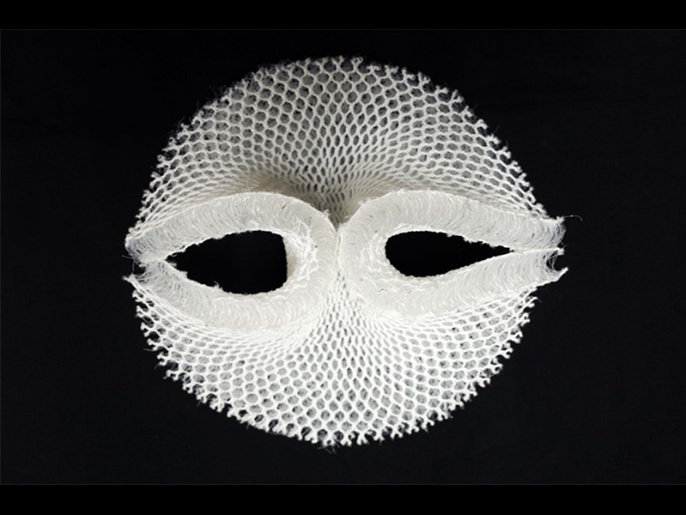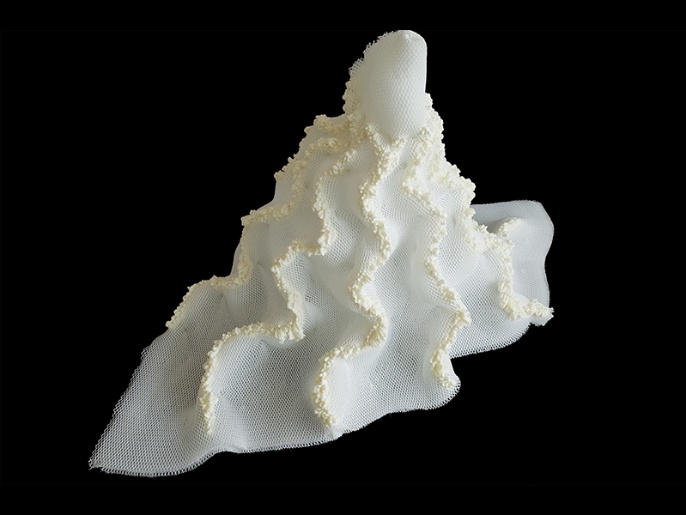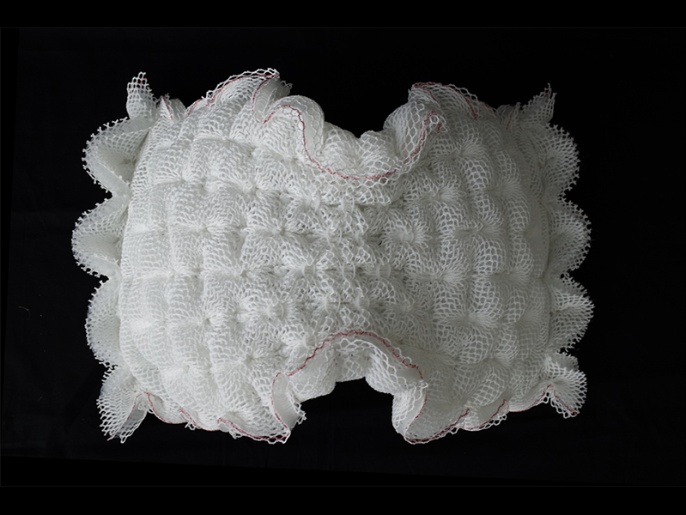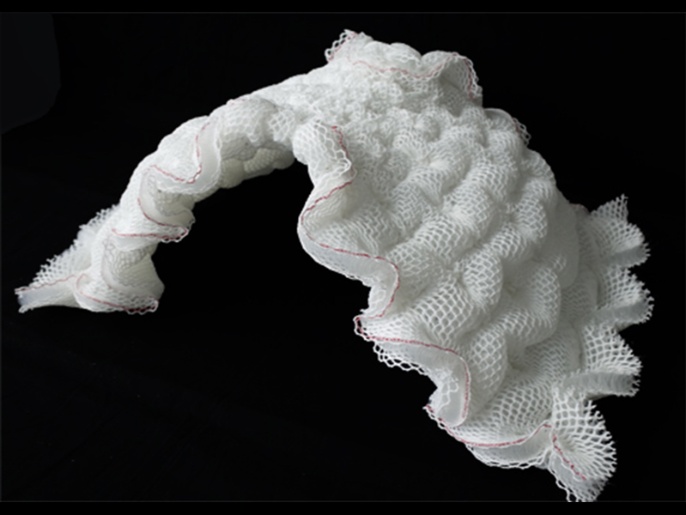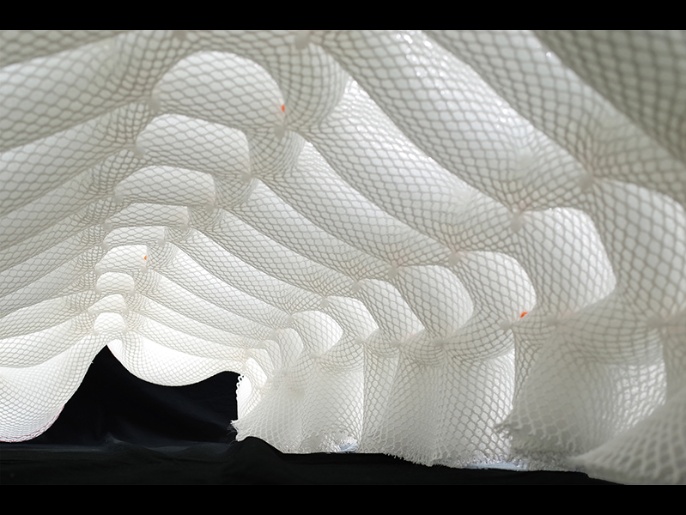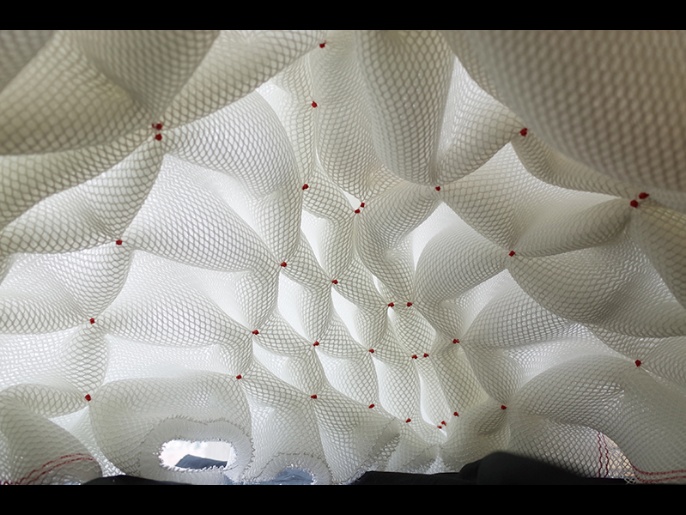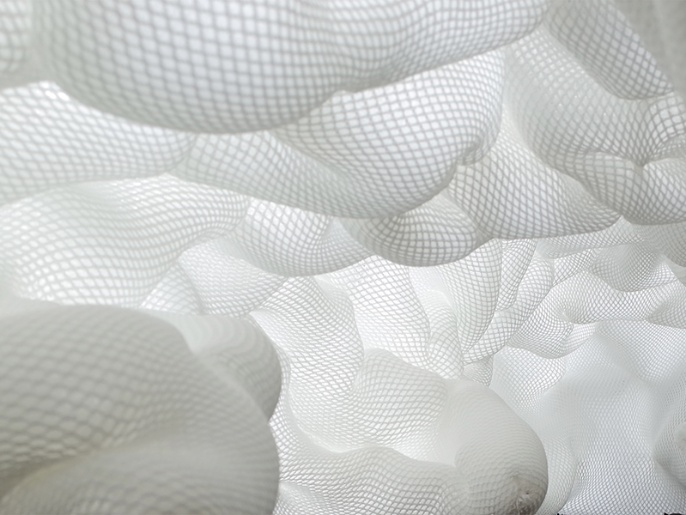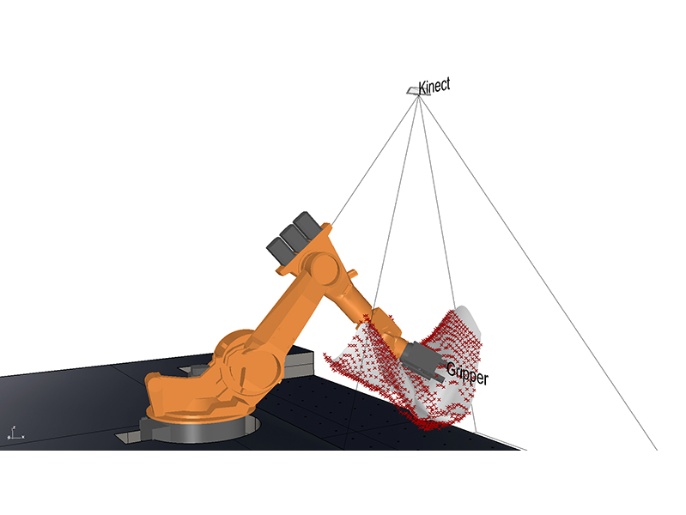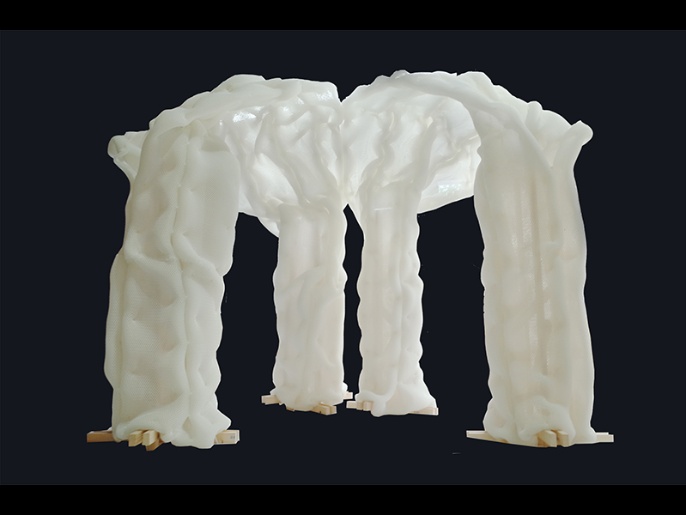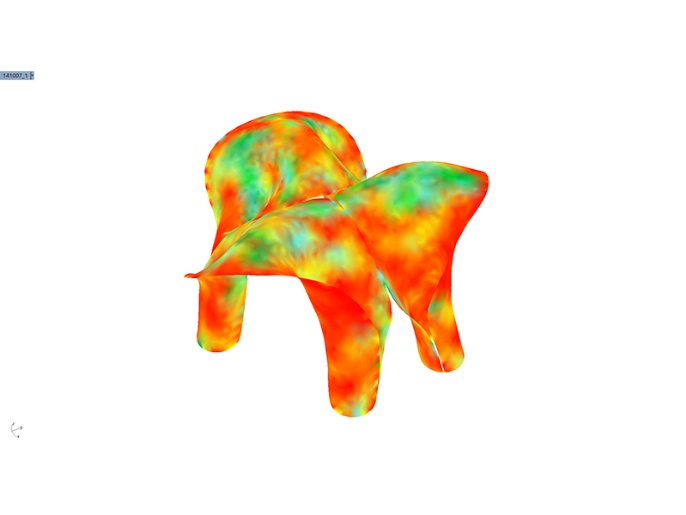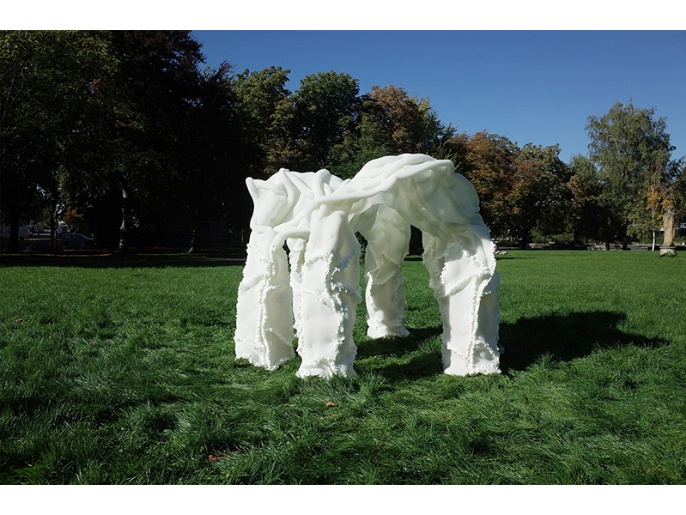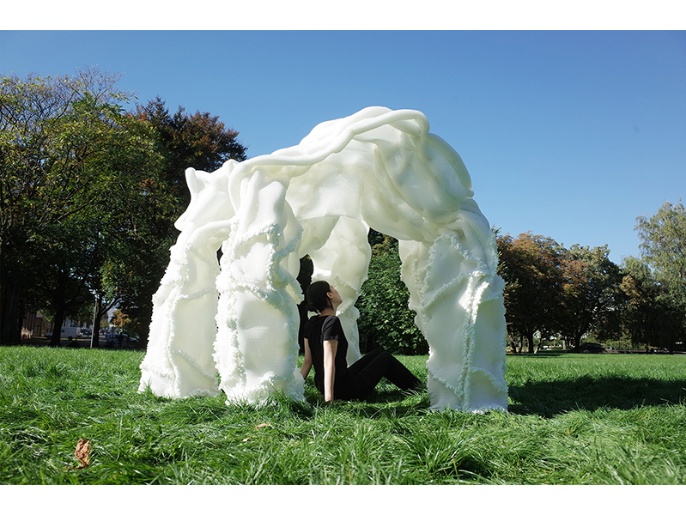Integrative Computational Design Methodology for Spacer Fabric Architecture
Spacer fabrics are 3D warp-knitted fabrics that have a volumetric structure. Together with the capacity to differentially stretch and contract, these materials allow three dimensional configurations that are specific to spacer fabrics.
This research proposes a computational design methodology that enables the generation of shape based on its material characteristics and material manipulations on both global and local scale. The Proposed process allows for the generation of functional surface articulations and the articulations of spatial textile geometries.
As a resin-infused composite structure the spacer fabric can serve both as an architectural construction system and as a building envelope. This methodology of developing fibrous and textile morphologies is contrary to a traditional hierarchical design process, which is based on a linear strategy: from design to implementation. The developed method is based on analogue material experimentation and integration of the material behavior into a computational design tool. Such a feedback process can unfold the potential material morphologies and performance characteristics of spacer fabric as an architectural material.
ITECH M.Sc. Thesis Project 2014: [Integrative Computational Design Methodology for Spacer Fabric Architecture
Taichi Kuma
Thesis Advisers: Moritz Dörstelmann, Marshall Prado
Thesis Supervisor: Prof. Achim Menges
Second Supervisor: Prof. Jan Knippers
Spacer fabrics are 3D warp-knitted fabrics that have a volumetric structure. Together with the capacity to differentially stretch and contract, these materials allow three dimensional configurations that are specific to spacer fabrics.
This research proposes a computational design methodology that enables the generation of shape based on its material characteristics and material manipulations on both global and local scale. The Proposed process allows for the generation of functional surface articulations and the articulations of spatial textile geometries.
As a resin-infused composite structure the spacer fabric can serve both as an architectural construction system and as a building envelope. This methodology of developing fibrous and textile morphologies is contrary to a traditional hierarchical design process, which is based on a linear strategy: from design to implementation. The developed method is based on analogue material experimentation and integration of the material behavior into a computational design tool. Such a feedback process can unfold the potential material morphologies and performance characteristics of spacer fabric as an architectural material.
ITECH M.Sc. Thesis Project 2014: [Integrative Computational Design Methodology for Spacer Fabric Architecture
Taichi Kuma
Thesis Advisers: Moritz Dörstelmann, Marshall Prado
Thesis Supervisor: Prof. Achim Menges
Second Supervisor: Prof. Jan Knippers


